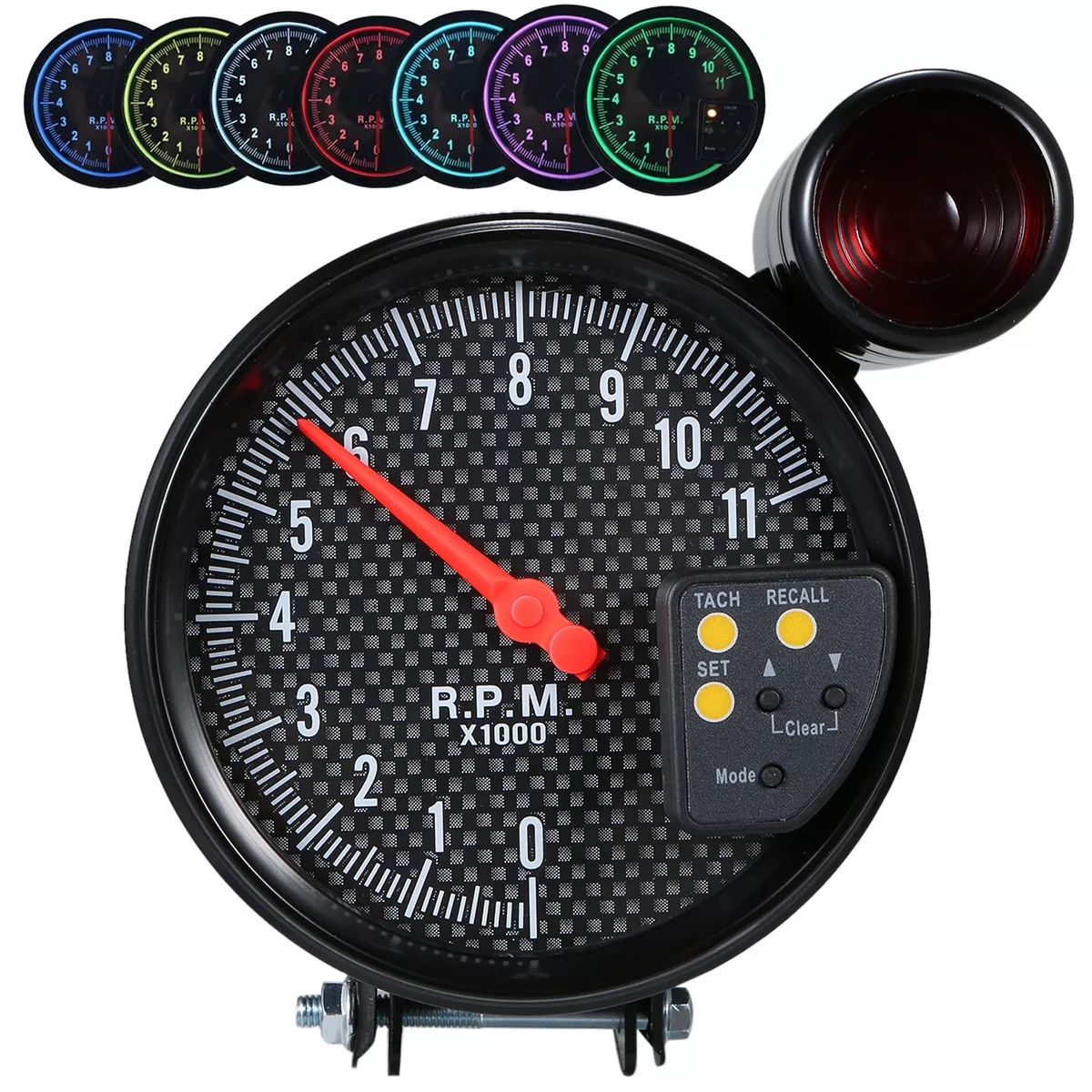Boost Your Driving Experience with a Dependable Tachometer
Wiki Article
The Importance of a Tachometer in Monitoring Engine Rate and Performance in Automotive Applications
In the realm of auto engineering, the tachometer stands as a crucial instrument in the vehicle driver's arsenal, giving a direct home window right into the inner functions of a vehicle's engine. Past its feature as a mere scale of changes per minute (RPM), the tachometer functions as an essential device for enthusiasts and experts alike, supplying real-time insights right into engine efficiency and health. Comprehending the value of this device surpasses surface-level monitorings, delving into the complex relationship between engine rate, power result, and overall driving experience. As we check out the complex role of the tachometer in automobile applications, a much deeper appreciation for its effect on automobile characteristics and performance begins to emerge.Value of Checking Engine RPM
Monitoring engine RPM, or changes per minute, is a vital element of automobile upkeep and performance analysis. Engine RPM straight correlates with the rate at which the engine's crankshaft rotates, showing how promptly the engine is running.Additionally, checking engine RPM is vital for efficiency analysis in racing and high-performance automobiles. In summary, keeping an eye on engine RPM is not just important for identifying issues however additionally for optimizing engine efficiency in various vehicle applications.

Advantages of Real-Time Data
In vehicle applications, real-time information plays a crucial duty in giving immediate understandings right into the efficiency and problem of the lorry. By continually monitoring various parameters such as engine speed, temperature, gas intake, and more, real-time information supplies various benefits that contribute to enhanced efficiency and safety when traveling.
One significant benefit of real-time information is its capacity to sharp motorists and service technicians to any type of anomalies or issues promptly. This aggressive strategy makes it possible for quick identification of potential troubles, permitting for timely interventions to avoid more damages or malfunctions. Additionally, real-time information promotes efficiency optimization by offering prompt responses on driving practices and engine efficiency. Drivers can readjust their habits in real-time based on this details to accomplish better gas economy and extend the lifespan of their lorry.

Furthermore, real-time information plays an important duty in modern vehicle diagnostics, enabling service technicians to quickly identify and resolve malfunctions. This causes reduced downtime, lower upkeep costs, and eventually, boosted overall car dependability and long life (tachometer). By utilizing the power of real-time information, auto stakeholders can make informed decisions that favorably influence both the performance and durability of the automobile
Influence On Gear Shifts
Effective equipment changes in auto applications considerably affect total efficiency and driving experience. The tachometer plays a crucial role in enhancing gear shifts by giving real-time engine speed information to the chauffeur. When approaching the redline on the tachometer, it indicates the motorist to upshift to avoid over-revving the engine and causing potential damage. On the other hand, downshifting at the right moment can help maintain the engine in its power band, guaranteeing responsive acceleration when needed.Furthermore, the tachometer aids in achieving smoother gear changes, specifically in hands-on transmissions. By keeping an eye on engine speed, chauffeurs can execute equipment changes at the ideal RPM range, reducing snagging activities and lessening endure the transmission elements. This precision on duty changes not only enhances driving convenience yet additionally adds to sustain performance.
Enhancing Gas Effectiveness
Provided the important function the tachometer plays in optimizing gear changes for performance and engine health, it directly adds to maximizing gas effectiveness in automotive applications. By giving real-time comments on engine speed, the tachometer helps chauffeurs in keeping the most reliable RPM variety for gas economic climate. When drivers constantly monitor the tachometer and readjust their driving behaviors accordingly, they can stay clear of unnecessary gas consumption brought on by over-revving or hauling the engine.Additionally, the tachometer helps motorists identify the most fuel-efficient equipment to be in at any given minute, preventing the engine from working harder than needed. This is particularly important throughout velocity and travelling, where being in the ideal continue reading this equipment can considerably affect gas efficiency. Furthermore, the tachometer can signal drivers to prospective mechanical problems that can be negatively affecting fuel economic climate, such as a sliding clutch or a clogged air filter. In final thought, the tachometer functions as a beneficial device in improving fuel performance by promoting ideal driving routines and determining locations for enhancement in the vehicle's efficiency.

Taking Full Advantage Of Engine Long Life
The tachometer's function in keeping track of engine rate and performance is instrumental in guaranteeing the durability of automotive engines. Checking the tachometer allows drivers to remain within the recommended RPM range for their lorry, preventing unneeded strain on the engine and expanding its life-span.
Final Thought
Finally, the tachometer plays a crucial function in keeping an eye on engine speed and efficiency in automobile applications. By giving real-time data on RPM, it enables effective equipment shifts, boosted fuel performance, and made best use of engine durability. This device is important for keeping optimal engine efficiency and ensuring the general functionality of an automobile.Report this wiki page